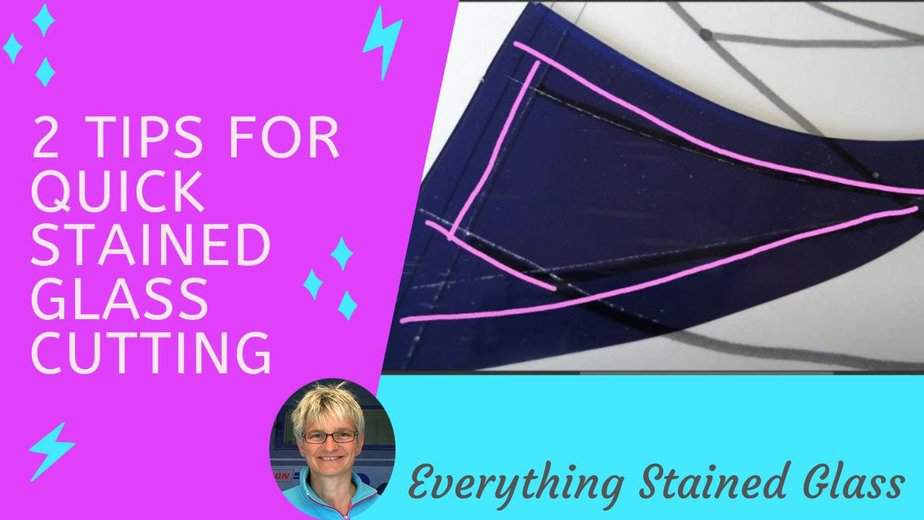Cutting stained glass is not something you want to do quickly just for the sake of it. But if you have a deadline or lots of repeated orders there are tricks to make cutting faster.
This short video will will help you cut stained glass more quickly by ditching an unhelpful glass cutting myth.
Additional Tips for Speeding Up Your Glass Cutting
I asked my online students what tips they have for cutting glass faster. They came up with some great ideas, as always:
- “owning” the glass. Not being afraid, letting the glass know YOU’RE the boss!
- having all the same glass on the bench
- having everything to hand; tools, oil, dustpan & brush
- outlining all the pattern pieces on a particular piece of glass so they can be cut out one after another quickly
- placing adjoining pattern pieces cut from the same glass beside each other with only the cutting wheel width between them. (Only relevant if the pattern in the glass flows with the design)
- taking your time to score and using a well-oiled cutter gives you a better break which in turn saves time grinding
And finally, 2 fun tips to end with:
- Putting your glasses on
- Listening to good (fast!) music
I hope that’s given you some ideas to speed up your glass cutting.
Video Transcript
I’ve got some new software to play with, and I thought it would be helpful to show you some tips in these little snippets. So we’ll see how we go. But bear with me because the software is new to me and I’m not the best. So, this idea is about cutting quickly. So if you want to do lots of either the same shape or you want to do different shapes, but you want to cut them really quickly, this is the way of doing it in a speedy fashion.
But this also another little tip that I’d like to show you before we start, and that is that when people talk about the warnings about not going over the same score, they mean going along a score like that. They don’t mean just quickly crossing it in a 90 degree angle or more. They just mean if you’re following this along there, say the score didn’t break. That means that you’ll be ruining your cutter because it’s going to be going over the same score and making a fair, horrible sound. So you don’t want to do that, but this is fine.
And if you think about it, if now you know that bit of information, it means that you can cut many shapes much quicker because you can just whiz along. Maybe the outside ones first you might want to do, but you can do them all at the same time, keeping the glass in the same place and the pattern, it works too, for the two template methods. So it’s just a really simple, quick tip to ensure that you’ll be able to speed ahead with your projects and not hang about trying to place the glass all the time and get it in the right position, or think that you’re not allowed to go across a score line in this fashion. So that’s the first of, I hope, many nuggets and I seem to have survived the software thing at the moment, but there’s always time 😉


Milly, Thanks for posting another very informative tip. I have avoided making cuts across other cut lines that I haven’t broken yet for fear it would still damage my cutter. Admittedly, I have done it from time to time, but I never made a habit of it. I expect I will save myself some time from now on, and make the crossways cut.
It’s that following along a score that hurts, not the crossways. Glad it helped Gail and thanks for posting 🙂